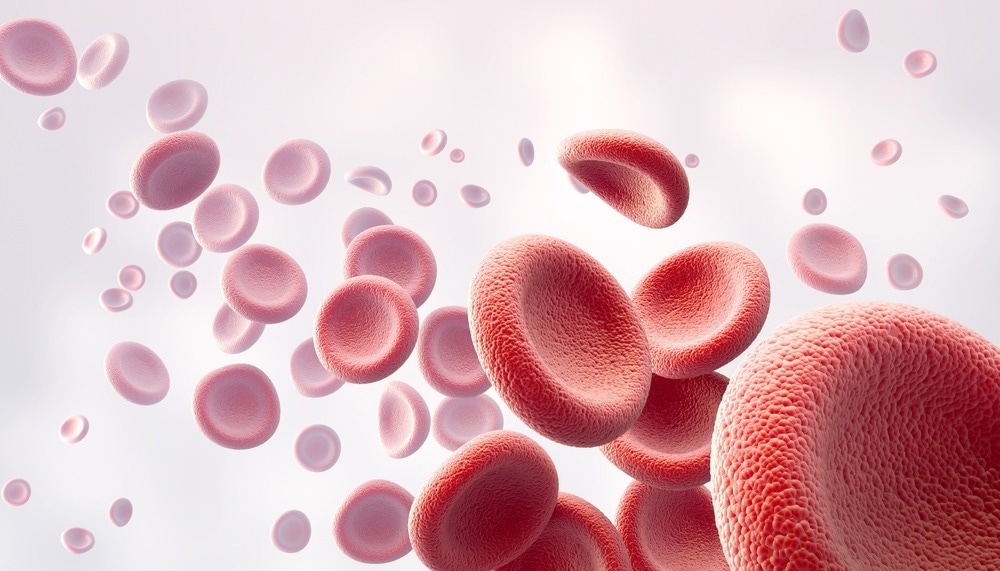When cells are exposed to stress and damage, cellular senescence occurs. This phenomenon increases with aging.
Senescent cells (SnCs) attain permanent growth arrest and exhibit senescence-associated secretory phenotype (SASP). Although several studies have indicated that SASP is associated with age-related pathologies and phenotypes in a paracrine manner, the physiologic role of SnCs in old mammals is not well understood.

Study: Systemic induction of senescence in young mice after single heterochronic blood exchange. Image Credit: Anusorn Nakdee / Shutterstock.com
Background
Heterochronic parabiosis is a surgical technique that offers a parabiotic pairing of two animals of different ages. This process rejuvenates old tissues and ages young tissues.
Heterochronic parabiosis involves the surgical joining of young and old mice by sharing both blood and organs, as well as their environments.
Previously, heterochronic parabiosis through old plasma dilution and blood exchange revealed that old age-related factors are systematically propagated and have progeronic effects in young mice. However, the mechanistic role of bloodborne factors in promoting aging remains unclear.
About the study
In a recent Nature Metabolism study, scientists performed heterochronic blood exchange in male mice and observe that aged mouse blood triggered cell and tissue senescence in younger mice.
Different tissues were assessed following blood heterochronicity experiments to understand the role of cellular senescence in promoting physiological aging phenotypes. The effect of SnCs, which is triggered during normal aging, and their circulation in old mice was also determined. Additionally, the systematic induction of senescence and aging in young mice was evaluated.
Study findings
Cellular senescence occurs in response to extrinsic and intrinsic signals. Some of the factors that trigger senescence include genomic damage, metabolic imbalances, mitochondrial dysfunction, and mitogenic signals induced by activated oncogenes.
SnCs, partially through the senescence-associated secretory phenotype (SASP), induce secondary senescence. Secondary senescence is involved with the senescence response in nearby non-senescent cells. Based on this observation, scientists postulated the possibility of transferring senescence from aged animals to young animals without chronological aging.
In vivo and in vitro experiments were conducted to determine the role of SnCs using plasma from mice and humans and blood transfer from old to young mice.
To understand the pro-aging effects of aged systemic environments, non-senescent cells of humans and mice were cultured in the presence of serum from young or old mice, or plasma from young or old individuals. In this experiment, the serum of four-month-old mice was compared to that of old mice that were thirty-two months old.
This comparison revealed that serum from old mice exhibited enhanced expressions of the senescence up-regulated genes Cdkn2a, and Cdkn1a, as well as SASP factors like Il6 and Mmp3 as compared to younger mice. This finding was determined using a cytokine array.
Older mice also exhibited decreased expression of the senescence down-regulated gene Lmnb1 than younger mice, whereas senescence-associated β-galactosidase (SA-β-gal) was up-regulated.
The reduction in cell proliferation in old mice was measured by 5-ethynyl-2′-deoxyuridine (EdU) incorporation. A significant decrease in high-mobility-group box1 (HMGB1) and laminB1 was observed.
One group of mice was treated with serum from old mice, whereas the other was treated with a mixture of serum from old and young mice. This experiment revealed the dominance of old mice serum, which strongly suggests that senescent phenotypes from old mice can be transferred to non-senescent mouse dermal fibroblasts (MDFs) through the serum.
Heterochronic blood exchanges between young and old mice were performed, with a control setup using isochronic exchanges. Bioluminescence of the p16-3MR reporter was tracked to assess if old blood could systematically induce senescence in young p16-3MR mice.
After 14 days of blood exchange, a significant elevation of whole-body bioluminescence in young p16-3MR mice that received blood from old mice was observed. No such observation was made in the control group.
A premature aging phenotype was observed when SnCs induced by irradiation in culture were transplanted into young mice. This observation is similar to previous studies reporting that the transplantation of irradiated cells into young mice caused a reduction of muscle and physical strength as compared to non-irradiated cells transplants.
After seven days of transferring old blood to young mice, the young mice performed poorly in the four-limb hanging test; however, the performance improved after fourteen days. No significant structural or functional changes were observed in the young kidneys following exposure to old blood.
Scientists suggested that senolytics could be used to prevent the systemic propagation of senescence. This could also be used to better understand aging and develop rational therapies to prolong life span.
Conclusions
Natural old-age SnCs appear to have an important role in promoting the systematic propagation of aging, especially in the kidneys, liver, and muscles.
Both in vivo and in vitro experiments on mice and humans demonstrate the possibility to transfer senescence through SnCs. Thus, SnCs could be targeted to generate novel therapeutic strategies.
Journal reference:
- Jeon, O. H., Mehdipour, M., Gil, T., et al. (2022) Systemic induction of senescence in young mice after single heterochronic blood exchange. Nature Metabolism. doi:10.1038/s42255-022-00609-6